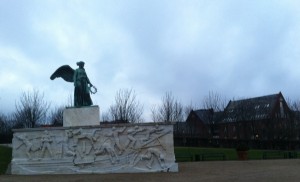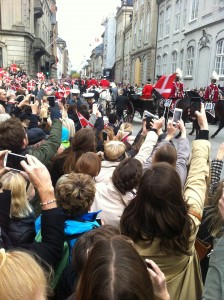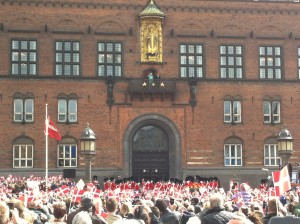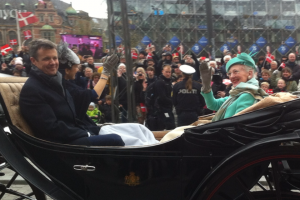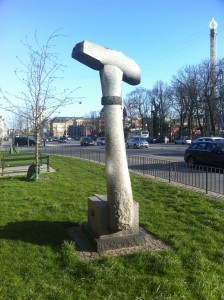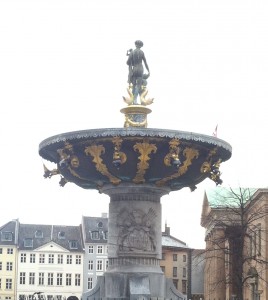Time is a hot commodity for current DIS students, as the end of the semester rapidly approaches. That truly unenviable time when one must decide to maybe figure out how to pronounce the town they live in or else just focus on seeing their 25th European country of the trip. Talk to an actual Dane or simply extract culture from another can of Carlsberg? It’s around this time that students begin developing a bucket list of sorts, and I’ve tried to make my own as realistic as possible: co-opt a current controversial political campaign into a list of basic demands that will improve life, liberty, and the pursuit of happiness for a future crop of DIS-ers.
Here’s the original poster as I saw it in Vordingborg, Denmark:
I’m pretty sure I was just trying to take a mirror selfie at the time, but turns out that slogan is a bit shocking. ”Islamisme” is simply the Danish word for Islam. This campaign is run by the Conservative Party, and is just part of a whole set of ”STOP” advertisements.
http://sorenpape.dk/stop.html
It literally translates to ”STOP HEART LOOSENESS”, which is actually getting at a desire to move away from systematic bureaucracy and into letting people (”hearts”) make decisions.
In the end, it just seems like quite the ambitious task and if there is anything I have learned in Denmark, it is that ”small is good”. I believe it is my role to change Danish society from the ground up. It won’t be easy and it won’t be without roadblocks, but I strongly believe that a brighter future lays ahead for Denmark if they follow my lead.
Firstly, it’s about time:
Once that horrible practice can come to a close, we can move on to a serious social issue:
”Hej hej”, pronounced ”hi hi”. People just flit around Copenhagen like little birds, and half of their conversations are the sound ”hi”. There’s such a thing as too happy, I’ll have you know. On the topic of language, there is another grievance that must be shared:
It comes up in common words like ”bored” and ”street”. You can’t even introduce yourself without encountering this menace. The word for ”food”, for example, is spelled ”mad”. It is pronounced ”mel” with a hint of ”th” at the end. Yikes. Art and culture are our next topic:
On one hand, I get it. It’s a great movie with fun songs. On the other hand, we invented High School Musical for a reason. Danes graduating high school in the last three or four years have repeatedly cited the Grease soundtrack as the most listened to songs over their school careers. And I hear it’s even played in Danish nightclubs. Better shape up. Lastly, let’s take it to the streets:
The little green man runs the lives of every Queen-loving Dane. He alone controls when, and sometimes if they will cross the street.

http://inudgeyou.com/traffic-nudge-countdown-traffic-lights/
There he is. And in four seconds, he will be gone. But guess what, Danes. When you stand in front of a one way, one lane alleyway and can see to Sweden in one direction and Germany in the next, it’s okay to cross when no cars are approaching. This one will likely not be solved in my lifetime, as I’m sure countless other righteous jaywalkers have tried and failed before me. Regardless, the dark angel looks pensively across her gray yet happy nation.


